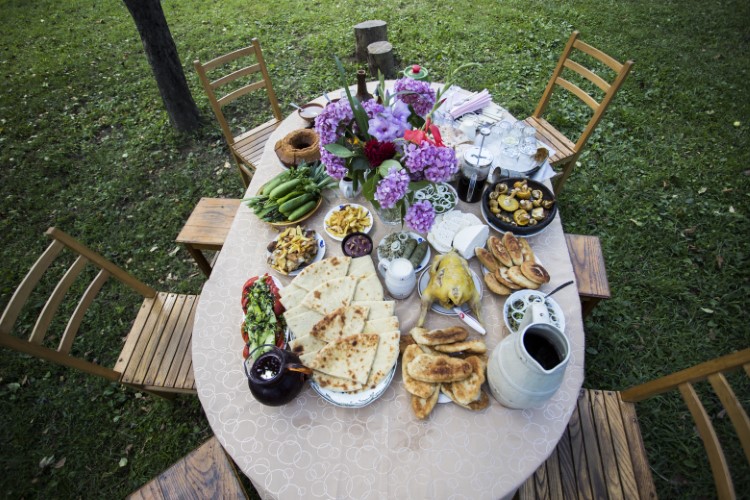Georgia is a culinary treasure trove, with its layered history that was interwoven with Arab, Persian, Mongolian cultures from the East and Greek, Roman and Turkish from the West, and yet there is a voice and chords of flavor distinctly Georgian, unlike any other cuisine. Straddling an isthmus of land between Europe and Asia the cultural influx was huge as it sat in the middle of the Silk Road.
Georgia’s natural climatic diversity also facilitates a range of ingredients, as there are Alpine regions with a wealth of wild berries, mushrooms, many rivers with wild fish, steppe lands laced with wild asparagus, and deciduous rain forests with fiddleheads and edible herbs; the Black Sea coast with tropical fruit such as kiwi and meyor lemons as well as hazelnut and tea; the continental valleys of Kakheti with lush amounts of wild and grown fruit and vegetables such as almonds, figs, and pomegranates. For meat, you have the migratory sheep of the highlands, famous pork from Kakheti, goats in the south, cows and chickens across the country that take a new level to the notion of free range.
Georgia’s cuisine is similar in serving style to Mediterranean and Middle Eastern cuisines with tables looking like a rainbow mosaic of tasty mezze plates using unripe fruit for zippy acidity, grape vine wood for cooking, fermenting all kinds of flowers and vegetables, the texture, the color of the Georgian feast is as visually appealing as it is delicious. All this natural bounty gets washed down with organic local wines, often orange, or amber as we call it, in color due to long skin maceration, fermented and aged in buried terra cotta vessels called Qvevri. These wines have the freshness of a white with the backbone of a red allowing them to interact with the dizzying range of flavors on the table.
Georgia has been cultivating grapes for more than 8000 years and wheat, grains, and pulses for 10,000 years so Georgians have been farming longer in one place than the history of most civilizations. Georgika in Greek means those that farm the land, indicating how they were known in antiquity. But perhaps the most extraordinary part of Georgian cuisine is its cultural context, eating with friends, family or guests in Georgia is a lavish long table covered in small tapas style dishes, with a toast master interweaving eloquent wisdom into the feast – inspiring dialogue, polyphonic songs, poetic toasts, and drinking copious amounts of wine from various vessels from silver azarphesha, to clay bowels called piala, to a kind of wine bong called kula – Georgians turn dining into a creative art form, as deeply moving as the people and history of this ancient and magical land.
